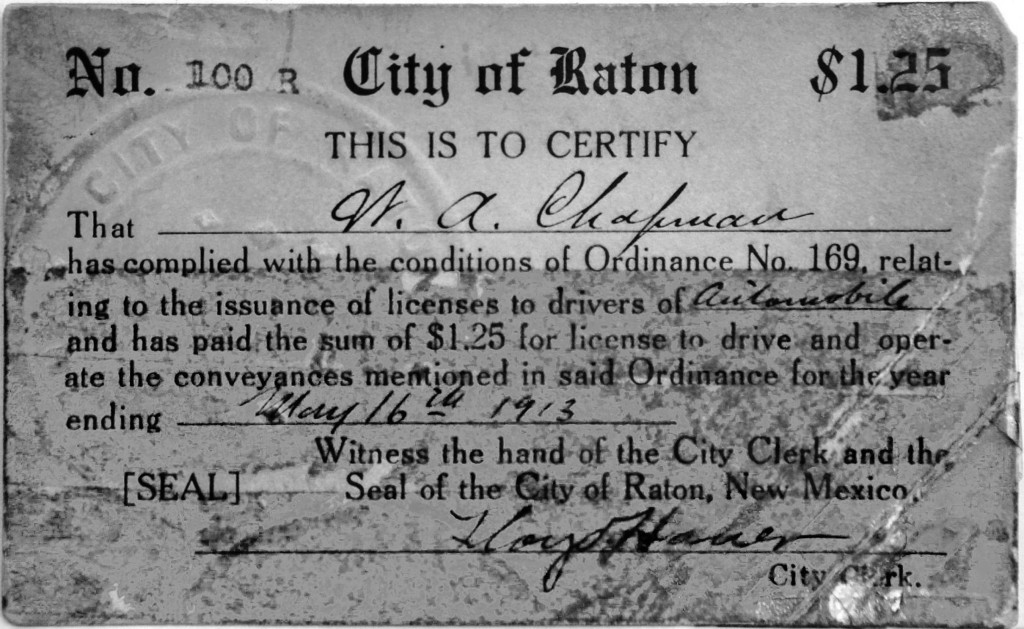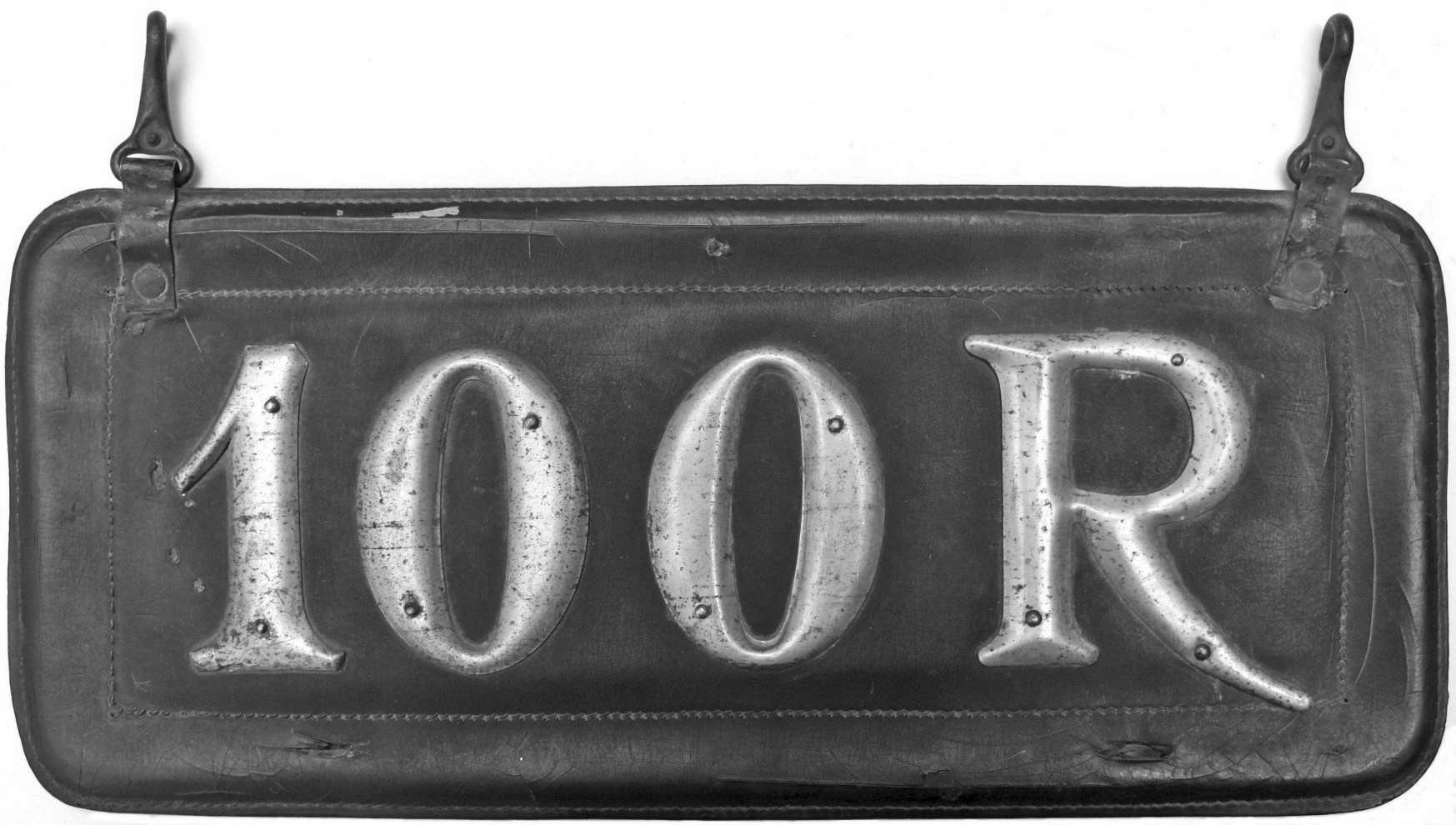by Bill Johnston RATON — Though America’s love affair with the automobile originated and grew most rapidly in the country’s major population centers, New Mexicans were far from passive onlookers. Horseless carriages were already trickling into the Territory by the turn of the twentieth century and within a decade there were enough of them puttering around the larger towns to cause some Territorial politicos to think that they needed to be licensed and regulated. This had already been done in other states, with New York leading the charge way back in 1901.
RATON — Though America’s love affair with the automobile originated and grew most rapidly in the country’s major population centers, New Mexicans were far from passive onlookers. Horseless carriages were already trickling into the Territory by the turn of the twentieth century and within a decade there were enough of them puttering around the larger towns to cause some Territorial politicos to think that they needed to be licensed and regulated. This had already been done in other states, with New York leading the charge way back in 1901.
It wasn’t the Territorial Legislature that was the first to act in New Mexico, however. Those top dog politicians met only once every two years, and even then for a session that lasted just a few months. Rather, it was the city fathers in several New Mexico towns who concluded that these useful new horseless buggies should require licenses. Over the years, there have been competing claims as to which town jumped on the bandwagon first.
An article in the December 1934 issue of New Mexico Magazine, p. 15, relates a story by Raton resident W.A. Chip Chapman that he was the holder of New Mexico’s first license plate. Chapman’s picture, along with photos of the license plate and one of his registration certificates, accompany the story. The tag shown is a leather plate with aluminum numerals. The pictured registration receipt shows that the governing ordinance was No. 169, and that the license number was No. 100R. His claim was that Raton was the first local New Mexico jurisdiction to license automobiles, that he got the first license, and therefore he had the first New Mexico license plate. But did he?
The Raton Daily Range for February 1, 1911, reported that ordinance No. 169 requiring the licensing of automobiles and motorcycles had been passed the previous evening, i.e., January 31, and publication of the ordinance took place in the February 1 and February 2 editions of the Daily Range. The ordinance states that it was to become effective five days after its passage and publication, which would have made it effective on February 7, 1911.
But it turns out that the city councils of Albuquerque, Santa Fe, and Las Vegas had all enacted and put into effect motor vehicle licensing ordinances the year before, in 1910. And all three of them required the display of license plates beginning in that year. Moreover, the Raton ordinance is a verbatim copy of the older Albuquerque ordinance, with only the paragraph numbering and the name of the town changed.
Consequently, there were many Albuquerque, Santa Fe and Las Vegas municipal plates in use long before Raton even passed its ordinance. But even though Chapman apparently bamboozled the editorial staff of New Mexico Magazine with his story, his license plate is of enormous historical importance, given that it was one of no more than about three hundred license plates issued during the Territorial era. After the 1934 story was published, Chapman’s tag faded into obscurity, leaving one to wonder what became of it.
Eva Mae Sproule was Raton’s longest serving City Clerk, holding the office without interruption for more than four decades, from May 1958 until her retirement in March 1999. A few months after she died in December 2011 at the age of 84, some of her effects were donated to the Raton Museum. There, in a large envelope, was Chapman’s license plate, along with the registration card that had been pictured in the 1934 magazine article. A photo of this recovered treasure appears with this article, and the plate itself now resides in the Raton Museum.
Shortly after New Mexico achieved statehood in 1912, the first state legislature passed an automobile licensing law which mandated all cars in the state be registered with and obtain a state license plate from the Secretary of State. The four cities which had been licensing autos on a municipal basis were permitted to continue doing so only until March 15, 1913, bringing Raton’s plates to an end after barely two years of use.
For several years the Chapman tag was the only territorial license plate known to survive from any city, but earlier this year another Raton municipal plate— identical to Chapmans except for the number— surfaced in a Raton antique shop. The New Mexico Transportation History Project (NMTHP) raised the sixteen thousand dollars required to purchase the plate for its collections.
This exceptionally rare artifact, bearing the number 109R, would have been issued in early February 1911, within days– or perhaps even hours– of Chapman’s plate. Unlike Chapman’s, however, the registration card was not with it, and as the registration records no longer exist within the city’s records the original owner has not been identified.
Although the licensing ordinances of the other three cities tell us what their license plates looked like, not a single one of those is known to survive today. The two Raton tags, therefore, hold their place in history as the oldest surviving New Mexico license plates.
Bill Johnston, a writer for over fifty years, is the author of the book Early New Mexico License Plates.
Do you have a question about an old New Mexico license plate? Contact the author via e-mail at NMhistory@totacc.com or by regular mail at NMTHP, P.O. Box 1, Organ, NM 88052-0001.

Bill Johnston photo.





